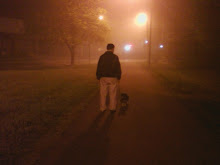Texts: I Kings 19:11-13
I am going to begin this morning by playing thirty seconds of a rather well-known piano piece composed by an American composer. (Thirty seconds of John Cage’s 4”33” – which is a silent composition).
That is the first thirty seconds of John Cage’s 4’33”. If you want to check it out there is a 9 minute, twenty-three second fully symphonic version on YouTube. Part of what Cage was trying to do in this composition is make this point: There is no such thing as empty space or an empty time. There is always something to see, something to hear. In fact, try as we may to make a silence, we cannot. Ironically, when I printed off a set of John Cage (1912-1992) quotes from the internet, the last page printed blank.
Cage was an ironic advocate of silence, considering it “impossible” in one sense, but necessary in another – necessary in helping us pay attention to what we otherwise might miss.
John Cage was not the first advocate of silence. As early as the Bible we are given an encouragement to silence through the story of Elijah. God tells Elijah to go stand on the mountain, and God will pass by. Now there was a great wind, so strong that it was splitting mountains and breaking rocks in pieces before the Lord, but the Lord was not in the wind; and after the wind an earthquake; but the Lord was not in the earthquake; and after the earthquake a fire, but the Lord was not in the fire; and after the fire a sound of sheer silence…. Then there came a voice to him (I Kings 19:11-13).
Was the writer here just reporting the story as it had been told him, and told many times before? Probably. Yet the writer tells the story with such beauty and conviction one wonders if this writer, too, knew what it was like to hear the voice of God whisper through the sound of sheer silence.
If “God bids us to pray, invites us to pray, inspires us to pray” as Marjorie Suchocki asserts (In God’s Presence, 28), and part of our prayer is silence, perhaps God is the original advocate of silence. It certainly seems that God has been speaking out of silence for quite some time. In the beginning when God created the heavens and the earth, the earth was a formless void and darkness covered the face of the deep, while a wind from God swept over the face of the waters (Genesis 1:1). Out of the quiet of that moment – creativity.
The heart of prayer is relationship and transformation. That has been the underlying conviction for this series of Lenten sermons on prayer. The heart of prayer is relationship and transformation. There are places in relationships for silence. Think about how much gets communicated silently, without words. Facial expressions communicate volumes, and we are often tuned in as much to those as to the words someone speaks. To gently grab someone’s hand can communicate love, tenderness, compassion, sympathy – and you don’t need words necessarily to tell you which one it is because the context often let’s you know. A hand held on a date usually communicates some level of romantic love. A hand grabbed standing before a casket communicates sympathy and compassion. When we want to listen deeply and well to someone, we give them the space to speak, allowing that silence for a while is an invitation to share. At the heart of prayer is relationship, and silence is an important part of our relationships, including our relationship with God. In silence our relationship with God can achieve a deeper intimacy.
And silence is transforming. Commit yourself to some silent time in your life and see if it doesn’t change you some. But silence as silent prayer does more than just lower your blood pressure. Richard Foster in his book Prayer: finding the heart’s true home writes this: We live in a wordy world with our sophisticated high-tech telecommunications systems…. [Silent] prayer is the one discipline that can free us from our addiction to words. (155) He quotes one of the desert Christian fathers, Ammonas: know that it is by silence that the saints grew, that it is because of silence that the power of God dwelt in them, because of silence that the mysteries of God were known to them (155). Intimacy with God involves being changed by God.
So how might we go about silent prayer? Paying attention to breathing is an ancient and important technique. Get comfortable, find a prayerful posture, invite God’s presence and breathe. Count the breaths. Use prayer beads or your fingers. A great way to count to ten is simply thumb = one, then touch each of your other fingers up to five. Do the same thing with your other hand, thumb = six, etc. Keep some kind of timer handy, but probably not something with a loud bell. Pick a time – three minutes, five minutes, ten minutes. Let thoughts come and go, while trying to focus simply on being in the presence of God.
Silent prayer helps us pay attention. It helps us learn to hear beyond words, to listen beyond sounds. But words and sounds are not our only potential spiritual distractions. Silent prayer when used with art or icons helps us internalize images more helpful to our spiritual growth than much of what we may see day in and day out. The use of pictures in silent prayer also has a long history. Here is a Russian icon from the fifteenth century painted by Andrew Rublev. It is sometimes called “the Savior of Zvenigorod” because it was painted for a church in Zvenigorod, Russia. Praying with this icon, Henri Nouwen writes, “Thus, seeing Christ leads us to the heart of God as well as to the heart of all that is human.” (Behold the Beauty of the Lord: praying with icons, 84)
Silent prayer is an important part of prayer as relationship and transformation. It takes us into a deeper intimacy with God. It opens us to the possibility of hearing God in new ways. Getting closer to God, growing more attentive to God, we are changed. In her poem “Praying” Mary Oliver calls prayer: “the doorway/into thanks, and a silence in which/another voice may speak” (Thirst, 37). And so it is.
Three minutes of silent prayer, with Rublev’s Christ icon projected.
I wish us all encounters with God in sounds of sheer silence. Amen.
John Cage, 4'33"



No comments:
Post a Comment